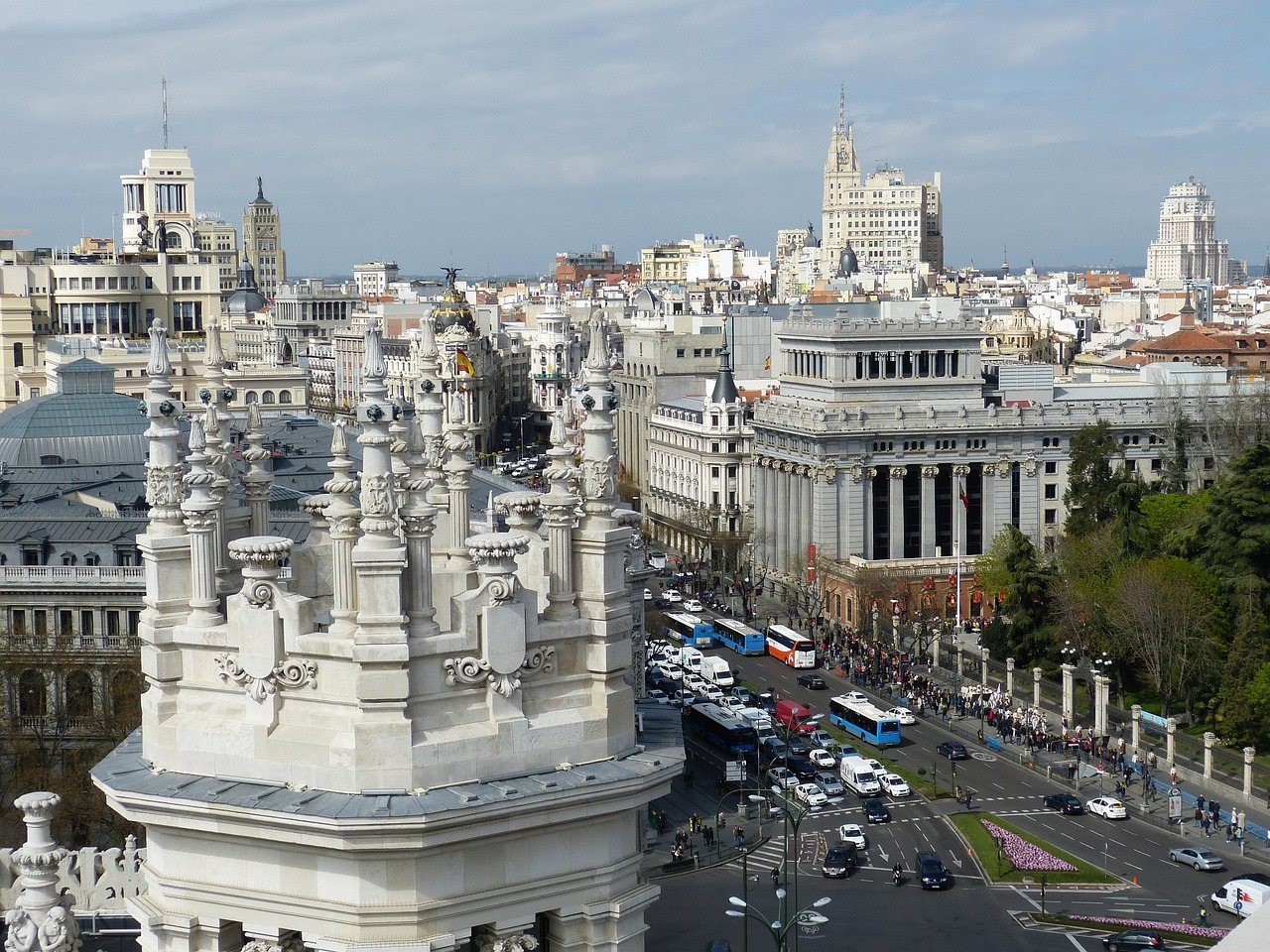Formula 1’s latest Spanish adventure takes the greatest show on Earth to Madrid and the brand new Madring circuit for the first time in 2026. The inaugural event is scheduled to take place from 11-13 September, marking the return of F1 racing to Spain’s vibrant capital after a 40-year absence.
The circuit will feature both street and custom-built sections, and is located next door to the Madrid-Barajas Adolfo Suarez airport. With capacity for up to 110,000 racegoers, it is set to become one of the sport’s largest venues.
If a trip to Madrid is on your schedule for 2026, you are probably wondering the best way for you to travel to the circuit. In this guide, we delve into all of the options for getting to the Madring circuit for the brand new Madrid Grand Prix.
Tickets are not yet on sale, but you can be the first to be notified when they become available by signing up to our ticket alerts. Visit the link below to sign up today!
🎟️ Sign up for ticket alerts here
- 🎟️ Sign up for ticket alerts here
- Where is the Madring Circuit?
- Where is the nearest airport to the Madring circuit?
- How to get from Madrid Airport to Madrid
- How to get to the Madring circuit from central Madrid
- How to get to the Madrid Grand Prix from other parts of Spain
- How to get to Madrid from the UK
- 2026 Madrid Grand Prix tickets
Where is the Madring Circuit?
The circuit is located near the IFEMA exhibition centre in the Valdebebas area of the city. This area is modern, but also known for its contemporary architecture and extensive green spaces.
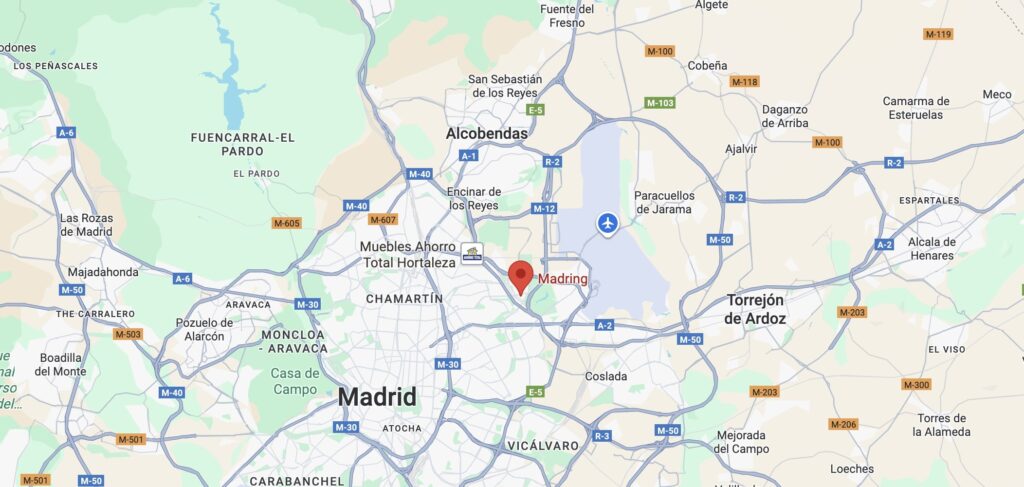
Where is the nearest airport to the Madring circuit?
Madrid-Barajas Adolfo Suarez airport (MAD) – is located just over 8km (5 miles) east of the Madring Circuit, making it one of – if not – the most accessible circuits on the Formula 1 calendar. As the only airport of Spain’s capital city, it is a major international hub with four main terminals that connects the country with Europe and the rest of the world.
Common flight routes to and from the airport include London, Paris and New York. It also boasts several routes to latin America, including cities like Mexico City and São Paulo.
If you are flying to Madrid, Madrid-Barajas is by far your best option. The next closest airports are Valencia (VLC) and Zaragoza (ZAZ) which are a two and three-hour train ride away respectively.
How to get from Madrid Airport to Madring circuit
By train – Due to its close proximity to the airport, the Madring circuit is a short metro ride away from the airport. Racegoers should take Line 8 (Pink line) which is accessible from all four airport terminals. From here, the journey is just eight minutes to Feira de Madrid station, where you can then exit for a two minute walk to the circuit.
By car – The drive from the airport to the circuit takes only seven minutes. After leaving the terminal, head south on the M-14 for 3.8 km. Take Exit 0B to merge onto the M-40 toward Aeropuerto, M-12, Terminal T-4, R-2, A-1, M-607, and A-6. Continue for 3.5 km, then take Exit 6 for Calle Silvano toward Feria de Madrid, Palacio de Hielo, and C. Comercial. At the first roundabout, take the first exit; at the next roundabout, take the second exit onto Av. del Partenón, where the Madring circuit is located.
By taxi – An abundance of taxis will be available at the airport, including Uber which operates throughout the whole city. Due to the short nature of the journey, the fare is likely to be minimal.
On foot – It’s definitely the least popular option and not generally advisable, but if you’re travelling light and want to minimise costs, walking 5.1 km (about 1 hour 13 minutes) from the airport to the circuit is an alternative to taking a taxi or public transport.
How to get from Madrid Airport to Madrid
Many people will elect to stay towards the centre of Madrid when visiting for the race weekend due to the abundance of accommodation options available there. If you arrive at the airport and are not planning on heading straight to the circuit, you have several options for reaching the city centre.
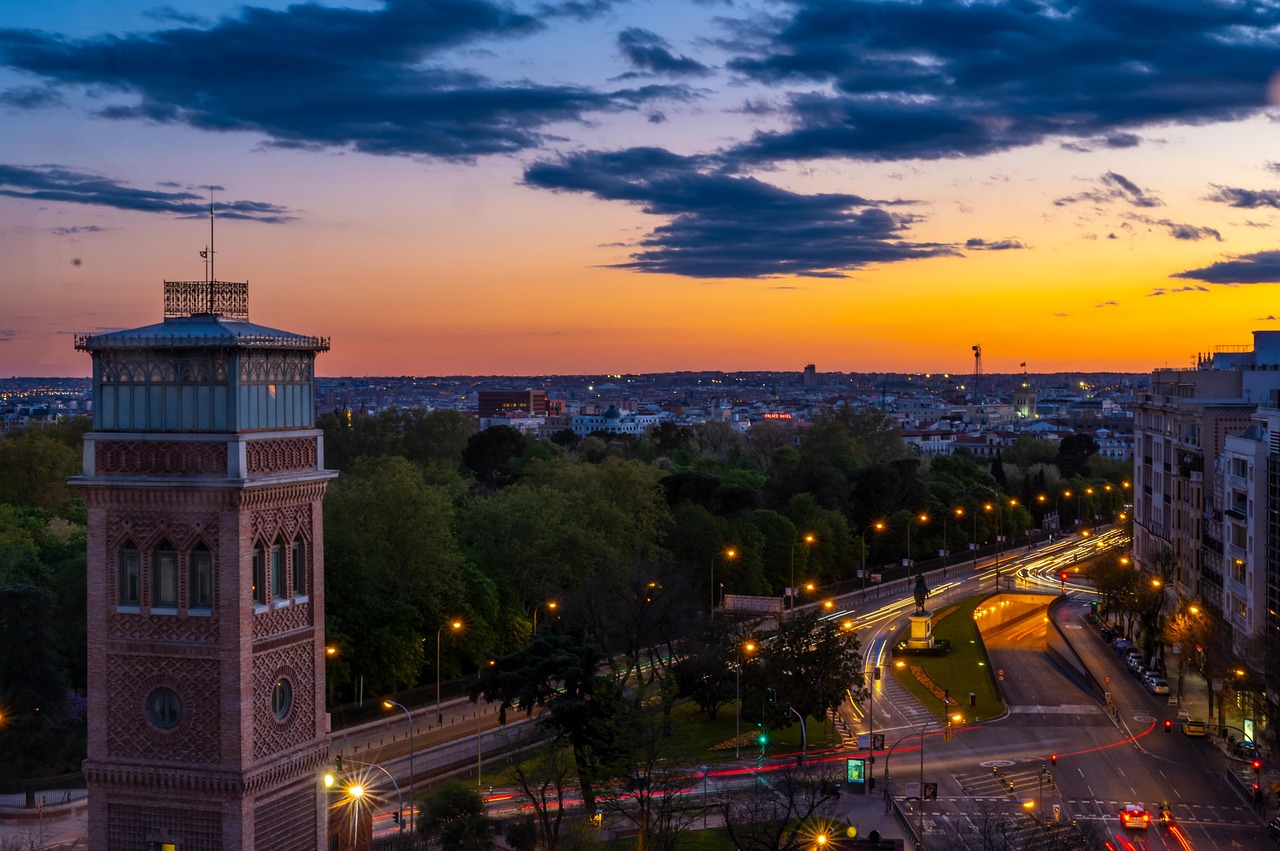
By Metro
Madrid’s Metro is one of the quickest ways to travel between the airport and the city. Line 8 (the pink line) serves both Aeropuerto T1–T2–T3 and Aeropuerto T4 stations, running from 06:00 to 01:30 daily. Trains connect directly to Nuevos Ministerios where you can transfer to other metro lines to reach the city centre or main transport hubs. Tickets can be purchased at station machines or online through the Madrid Metro website/app.
By Train
Prefer to go straight to the rail network? Cercanías lines C1 and C10 run from Terminal 4 directly to Atocha, Madrid’s central train station and hub for onward travel around Spain. This is ideal if you’re arriving at T4 or planning to connect with long-distance trains.
By Bus
Airport Express Shuttle Bus (EMT Madrid) – This bright yellow bus runs from all terminals to key points in the city centre (including Atocha) from 06:00 to 23:30, with special night-service departures when other options may be limited. Tickets are purchased on board.
By Taxi
Taxis queue outside every terminal and charge a flat rate to central Madrid. Ride-sharing apps such as Uber, Bolt or Cabify also operate. These are the most convenient door-to-door options but fares are higher than public transport and ride-sharing prices can vary with demand.
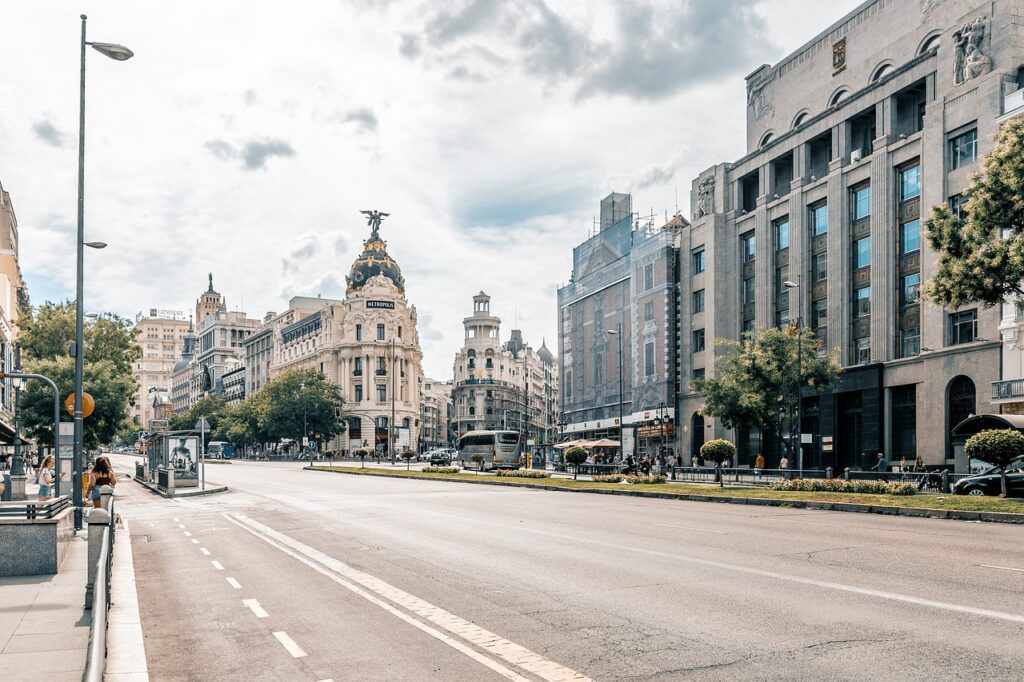
How to get to the Madring circuit from central Madrid
By Metro
Madrid’s Metro is one of the fastest ways to reach Madring from central Madrid. You can take Line 8 (the pink line) from a central station like Nuevos Ministerios toward Feria de Madrid, which drops you close to the circuit, particularly near the South Gate. The trains run frequently, and the journey usually takes around 25–40 minutes depending on your starting point. Tickets can be purchased at machines in the station or via the Madrid Metro app. On race days, expect the trains to be busier than usual, so it’s worth travelling slightly earlier or later to avoid the peak crowds.
By Train
If you prefer a rail option, Cercanías Line C1 provides a convenient route to the circuit, stopping at Valdebebas, right in the Valdebebas area of Madring. This line connects major hubs like Atocha, Chamartín, and Nuevos Ministerios, making it easy to start your journey from almost anywhere in the city. The ride can be slightly faster than the metro if you catch a direct train, and it’s often less crowded during peak hours. Remember to check the Cercanías schedule on event days, as extra trains may be running.
By Bus
Several EMT and intercity buses stop near the circuit, including lines like 73, 112, and 122, among others. Travel times vary depending on traffic and your starting location, but you can generally expect around 40–60 minutes from central Madrid. Buses can be a good option if your hotel or starting point isn’t conveniently located near a metro or train station. On busy event days, buses may experience delays, so allow extra time and consider checking if special race-day services are running that drop passengers closer to the circuit entrances.
By Taxi
Taxis, Uber, and Cabify offer the most convenient door-to-door service from anywhere in central Madrid directly to the circuit gates. This option is ideal if you have luggage, are travelling in a group, or simply prefer comfort. Travel time can be faster than public transport, especially outside peak hours, but be aware that traffic around the area in which the circuit is located may increase journey times on race days. Prices are higher than public transport, and ride-sharing services may use dynamic pricing, so fares can vary.
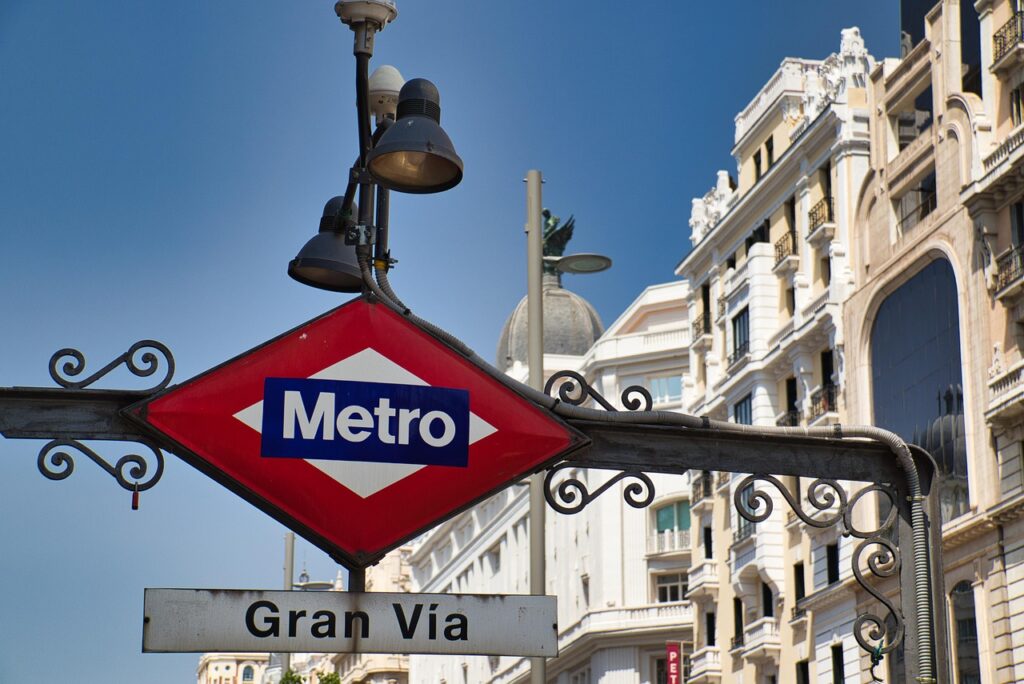
How to get to the Madrid Grand Prix from other parts of Spain
By Coach
Intercity coaches connect Madrid with major cities across Spain, including Barcelona, Valencia, Seville, Bilbao, and Malaga. Companies like Alsa and Socibus operate multiple daily departures, offering a comfortable and affordable way to travel. Tickets can be booked online through the operators’ websites or purchased at the main bus stations in each city.
By Train
Spain’s high-speed AVE and regional train services also link Madrid with cities such as Barcelona, Valencia, Seville, Bilbao, and Malaga. Trains depart frequently throughout the day, with journey times ranging from around 2 to 5 hours depending on the route. Tickets can be purchased online at Renfe.com or at train stations in each departure city.
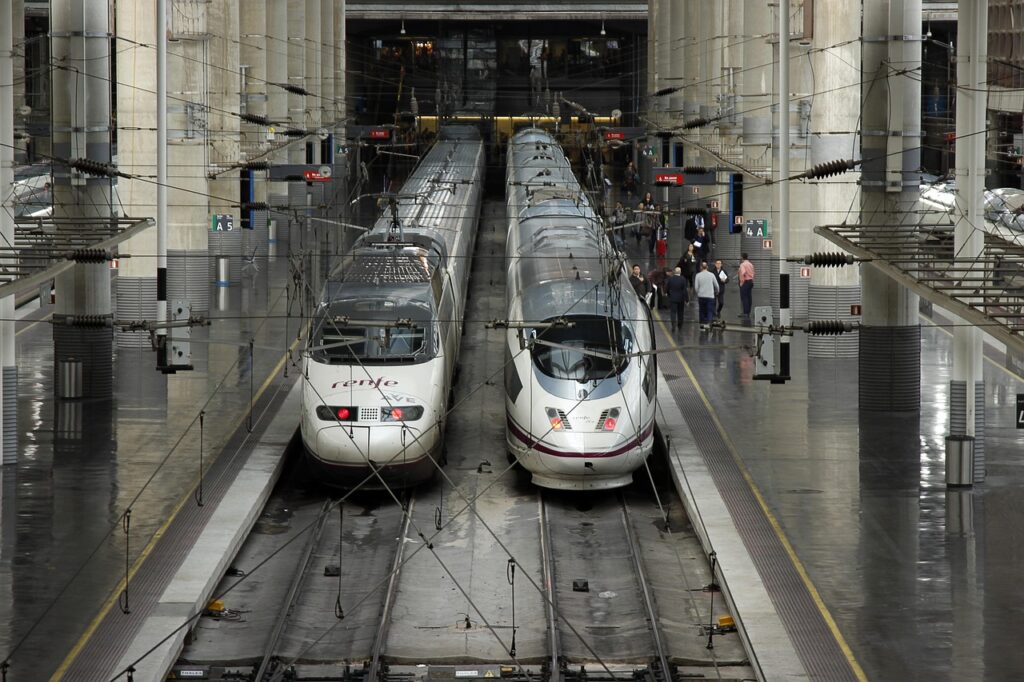
How to get to Madrid from the UK
Direct flights from the UK to Madrid-Barajas Airport are widely available, with services from London Heathrow, Gatwick, Luton, Stansted, Manchester, Birmingham, and Edinburgh. Airlines such as Iberia, Air Europa, easyJet, and Ryanair operate frequent routes, with flight times usually around 2–2.5 hours.
If you prefer to avoid flying, you can take a train combination from London to Madrid using the Eurostar to Paris and then connecting to the high-speed TGV/AVE trains. The journey takes roughly 7–8 hours, with fares starting at around £90 (€105).
For those based in southern England, there’s also the option of taking an overnight ferry from Portsmouth or Plymouth to Santander or Bilbao, then continuing to Madrid by train or coach. It’s a slower route, but it offers a scenic and leisurely way to travel, ideal if you’re looking to make the journey part of the adventure.
2026 Madrid Grand Prix tickets
Now you know how to make your way to the Madring Circuit, it’s time to get think about Madrid F1 tickets if you don’t already have them. Tickets are not yet on sale, but will be landing very soon! Sign up for our ticket alerts via the link below to be the first to be notified when we go on sale!
